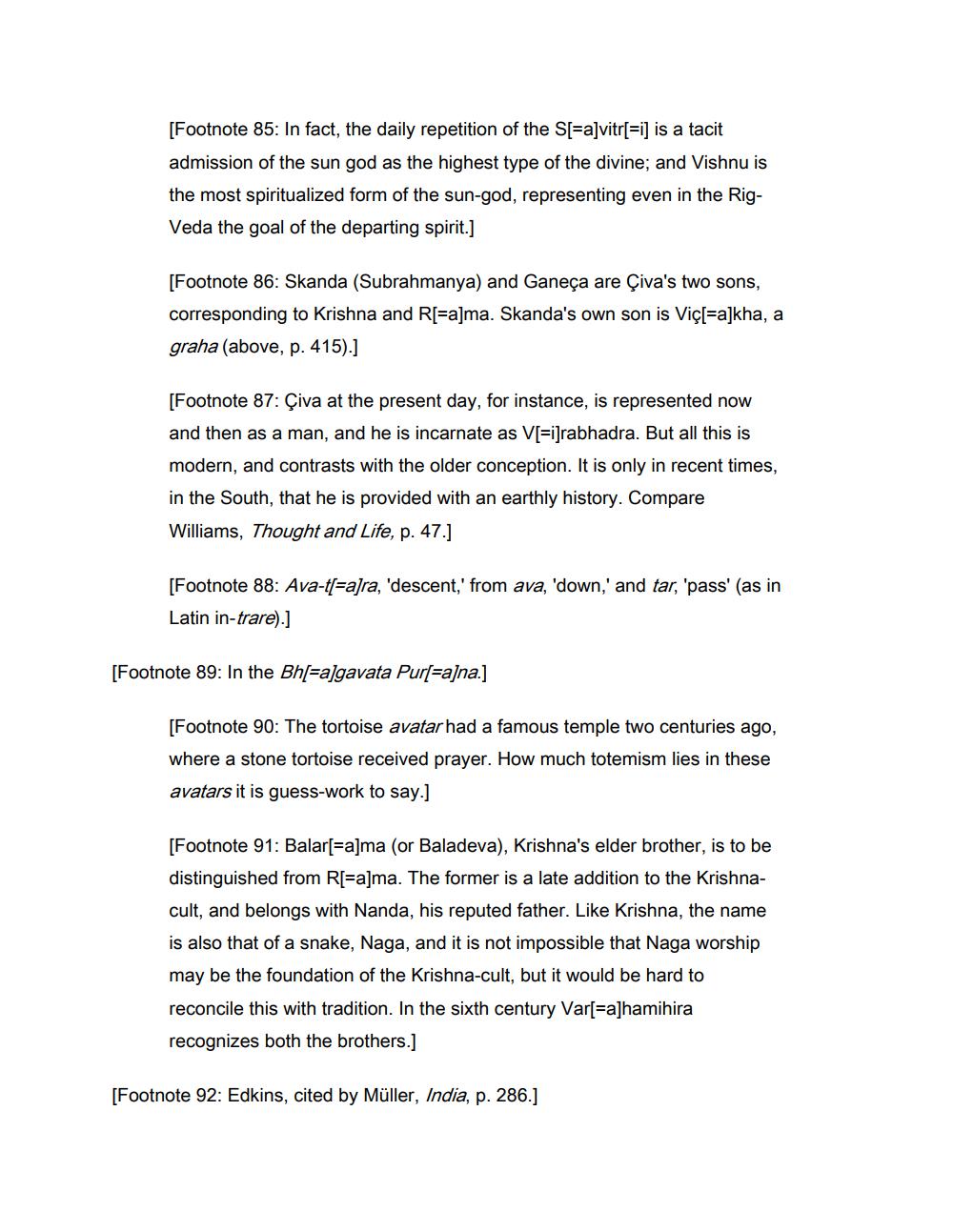________________
[Footnote 85: In fact, the daily repetition of the S[=a]vitr[=i] is a tacit admission of the sun god as the highest type of the divine; and Vishnu is the most spiritualized form of the sun-god, representing even in the RigVeda the goal of the departing spirit.]
[Footnote 86: Skanda (Subrahmanya) and Ganeça are Çiva's two sons, corresponding to Krishna and R[=a]
ma. Skanda's own son is Viç[=a]kha, a graha (above, p. 415).]
[Footnote 87: Çiva at the present day, for instance, is represented now and then as a man, and he is incarnate as V[=i]rabhadra. But all this is modern, and contrasts with the older conception. It is only in recent times, in the South, that he is provided with an earthly history. Compare Williams, Thought and Life, p. 47.]
[Footnote 88: Ava-t[=a]ra, 'descent,' from ava, 'down,' and tar, 'pass' (as in Latin in-trare).]
[Footnote 89: In the Bh[ra]gavata Pur[ra]na.]
[Footnote 90: The tortoise avatar had a famous temple two centuries ago, where a stone tortoise received prayer. How much totemism lies in these avatars it is guess-work to say.]
[Footnote 91: Balar[=a]ma (or Baladeva), Krishna's elder brother, is to be distinguished from R[=a]ma. The former is a late addition to the Krishnacult, and belongs with Nanda, his reputed father. Like Krishna, the name is also that of a snake, Naga, and it is not impossible that Naga worship may be the foundation of the Krishna-cult, but it would be hard to reconcile this with tradition. In the sixth century Var[ra]hamihira recognizes both the brothers.]
[Footnote 92: Edkins, cited by Müller, India, p. 286.]




